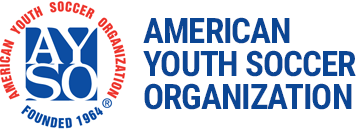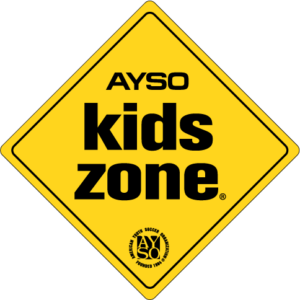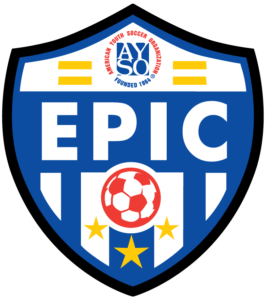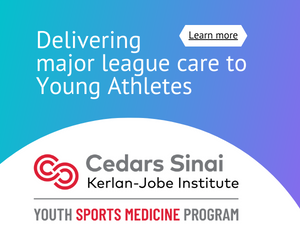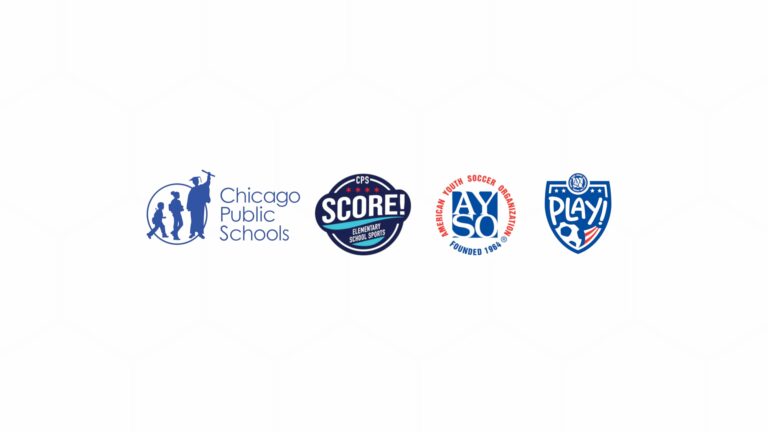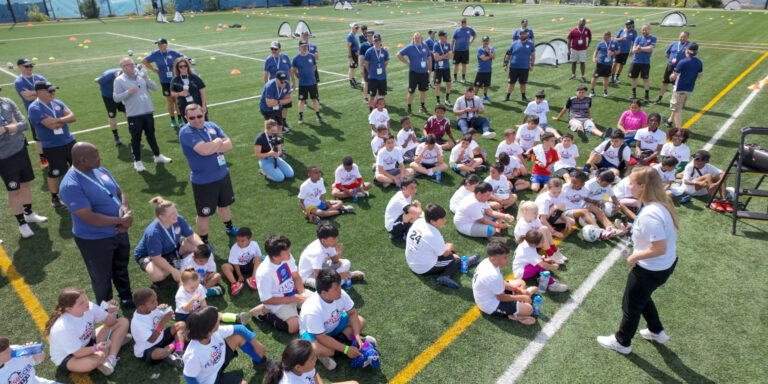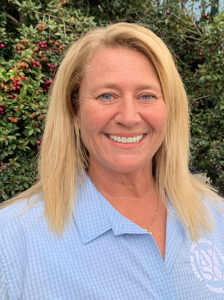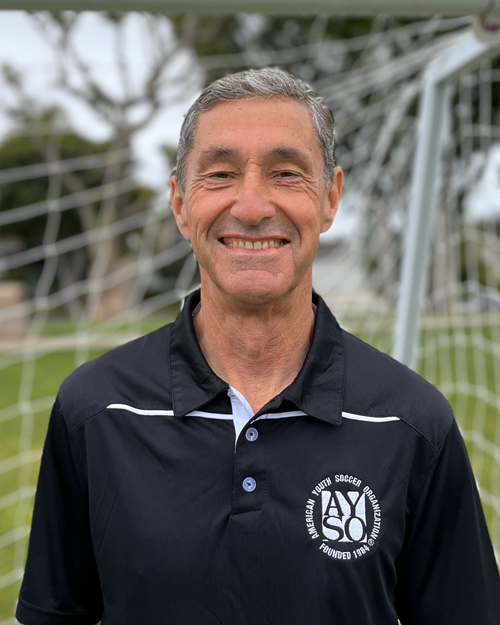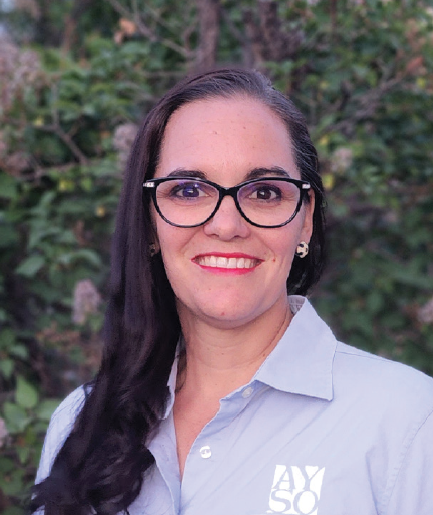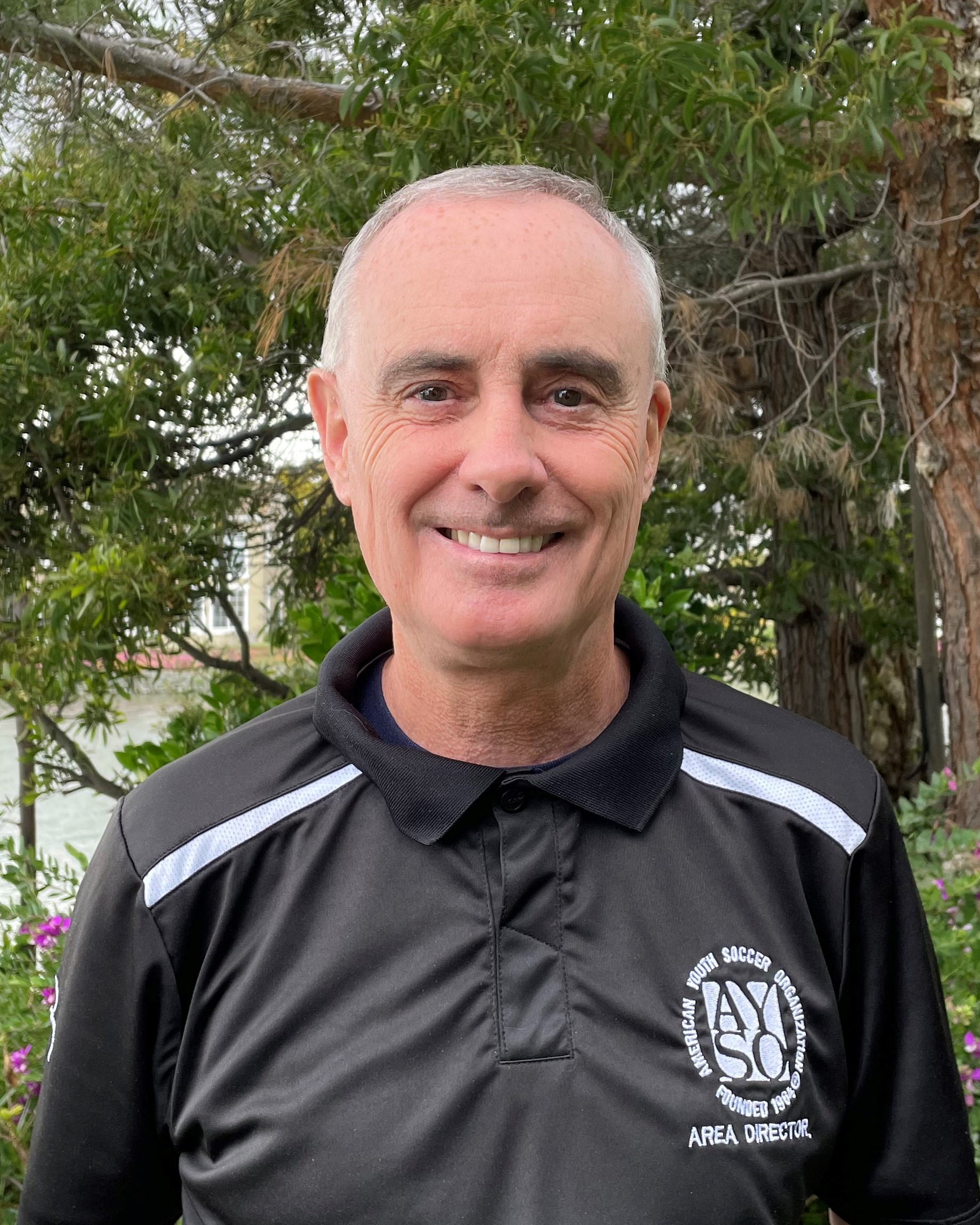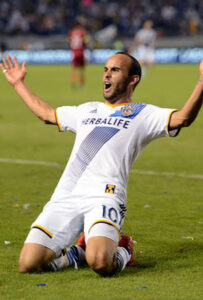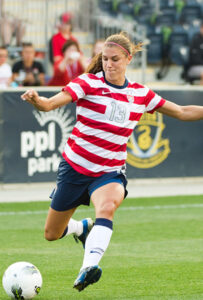Thank you for visiting AYSO, the World’s Biggest Soccer Club!
AYSO is a national organization with 850 individual programs, called Regions, across the nation, engaging more than 400,000 players and 100,000 volunteers. Because of our great diversity, many answers to your questions may be found through your local AYSO Region, which can be found by visiting our Region Locator and typing in your zip code.
Here you will find some of our most common questions and basic information to help you navigate the AYSO world. Should you require immediate assistance, please contact us.
THE BASICS
- Everyone Plays® – Every player on every team must play at least 50 percent of every game. Spending the game on the bench is no way to learn soccer!
- Balanced Teams – Each year we form new teams as evenly balanced as possible. This allows for each player to gain experience from a wide variety of teammates and different skill levels.
- Open Registration – Interest and enthusiasm are the only criteria for playing. There are no elimination try-outs and nobody gets cut.
- Positive Coaching – AYSO requires our coaches to create a positive experience for every player.
- Good Sportsmanship – We strive to create a positive environment based on mutual respect rather than a win-at-all-costs attitude.
- Player Development – We believe that all players should be able to develop their soccer skills and knowledge to the best of their abilities, both individually and as members of a team, in order to maximize their enjoyment of the game.
AYSO’s Vision is to provide world class youth soccer programs that enrich children’s lives.
AYSO’s Mission is to develop and deliver quality youth soccer programs which promote a fun, family environment based on AYSO’s Six Philosophies:
- Everyone Plays®
- Balanced Teams
- Open Registration
- Positive Coaching
- Good Sportsmanship
- Player Development
Soccer is a global sport that Americans have embraced in record numbers. From teaching basic motor skills to the very young, to teamwork and social skills in teens and preteens, soccer is a game you can grow with and enjoy for the rest of your life.
AYSO’s “child first” approach with age-appropriate, small-sided games makes it one of the finest athletic programs in the world. Development over winning is fundamental in AYSO.
AYSO puts your child’s safety above all else. AYSO’s Safe Haven program is designed to address the need for child and volunteer protection by:
- Screening and registering all AYSO volunteers
- Requiring training and certification
- Providing specific child and volunteer protection policies and guidelines
- Promoting safety and injury prevention
Our volunteers are also asked to complete Safe Haven courses and job-specific training in order to become certified. AYSO in-person and online training focuses on the best ways to work with children and important safety protocols.
Kids Zone® is a dynamic program designed to eliminate negative sideline behavior. Kids Zone® buttons and signs are distributed via your Region and displayed at games and practices. Parents are asked to sign the Kids Zone® Pledge promising to behave within the guidelines of the program.
AYSO’s unique, dynamic programs and policies focus on protecting our entire member base. These include:
Safe Haven – The AYSO Safe Haven program was the first of its kind in youth sports, most notably in soccer. We continually strive to create a safe environment for our players and volunteers, so they can enjoy a happy and healthy soccer experience.
AYSO Certification – AYSO provides training certification for all its volunteers. Certification helps ensure every AYSO child will be treated with understanding, compassion, and respect
Kids Zone® – Kids Zone is a dynamic program targeted to eliminate negative sideline behavior. Kids Zone® buttons and signs are distributed throughout the Region and parents are asked to sign the Kids Zone® Pledge promising to behave within the guidelines of the program.
The Volunteer Protection Act of 1997 – This law grants immunity from certain types of prosecution for volunteers who meet its requirements. In order to receive full protection under the law, AYSO volunteers need must:
1. be properly trained and certified;
2. be performing duties as laid out in a position description;
3. act within the scope of AYSO’s Policies, Procedures, and Guidelines.

Practices are held once or twice a week. Games are usually held on weekends. Sometimes the youngest players have a combined practice and game on a weekend day. The location of games and practices will be determined by your AYSO Regional Board with schedules provided to you by your child’s coach.
The main season is in the fall with registration taking place in the spring. However, seasons are decided at the Region level and vary greatly due to weather, field availability and other local factors. Spring season is played in many parts of the country as either an additional or the only season. Some soccer, such as Playground, is even played indoors year-round!
FOR KIDS
Visit our Region Locator, enter your ZIP code, and you will be given contact information for the Regions closest to you. If you have any difficulty contacting your Region, please contact the National Office at 1-800-USA-AYSO or 800-872-2976 and ask for Member Services.
The cost of registration differs depending on the Region. The fee is used for insurance, equipment, uniforms, program development, field rental, and other needs. None of our Regional volunteer leadership receives payment for their time.
Yes! AYSO is proud to offer a very special program for children and adults with physical or mental disabilities. The AYSO EPIC program provides a safe, fun environment with trained coaches and volunteers who facilitate an enriching experience that the players and their families will cherish forever. Buddies assist during the games in which players learn soccer while meeting new friends, having fun and increasing skills and self-esteem. Please contact us at AndyPrice@ayso.org or 800-872-2976 for more information.
Refund policy varies by AYSO Region. Please refer to your Region’s website for complete information.
Good sportsmanship is one of the fundamentals of any sport. It is simply showing courtesy and respect for all involved in the game.
AYSO has always encouraged good sportsmanship in our programs. It is one of the philosophies listed in the AYSO National Bylaws. AYSO strongly encourages our Regions to promote good sportsmanship throughout our inclusive and dynamic programs. Elements of our programs may vary from Region to Region, but all define the conduct of players, coaches, referees, and even parents.
We strive to educate our Regions and all AYSO volunteers to know what is expected of them when it comes to good sportsmanship. AYSO understands that good sportsmanship doesn’t just happen. It needs to be taught, encouraged and demonstrated.
Shin guards are mandatory during practice and games. Full-coverage shoes are required, and it is advisable to use shoes designed specifically for soccer. A limited number of balls will be supplied, but it is ideal for every child to have their own soccer ball for practicing and playing on their own. Most AYSO teams play in uniforms supplied by the Region which are included in the registration fee. Regions also provide field equipment, such as goals, nets, and flags.
Welcome to AYSO! Your coaches will contact you with all the information you will need to get started, including practice times and location. Teams may begin practice 2-3 weeks before the official start of season. Please don’t panic if you see teams practicing and your child has not been called! Not all teams begin practice at the same time. If your child has not been called, please check your AYSO Region website, or contact the Region administrator.
Always Be Positive!
You are not on the team, but you have strong influence on the team’s environment. Applaud good plays by your child’s team and also by the opposing team. Support all efforts to remove verbal and physical abuse from youth sporting activities.
Be Enthusiastic And Supportive
Let children set their own goals and play the game for themselves. Don’t put too heavy a burden on your child to win games!
Reinforce Positive Behavior
No one likes to make a mistake, so if your child does make one, remember that he or she is still learning. Encourage your child’s efforts and point out the good things your child accomplished.
FOR VOLUNTEERS
Thank you so much for being a part of AYSO! We’ve got your back. Please visit AYSOVolunteers.org for all of your volunteering needs.
Yes! AYSO is a volunteer-run organization. Coaches, referees, and administrators are all volunteers. Over 220,000 parents, neighbors, relatives, and friends lend their time and talents so that each child gets a terrific AYSO experience! Are you ready to make a difference in your community? Contact us today!
It’s easy! Contact your Regional Commissioner to see what positions are available in your area. They will be happy to find the right job for you.
It only takes a few hours to become qualified as an introductory-level coach or referee. But if you’re not able to commit the time, there are many other jobs you can help with! Even a few hours each season are an important contribution to your team and Region. Read more about AYSO volunteer positions, or contact your local AYSO Region.
The AYSO Team Parent is a pivotal part of every team! They are the coach’s assistant, cheerleader, and traffic director all in one. These are things you will already be doing if your child is on the team, so take it one more step and help the entire team operate more smoothly! Every coach needs help arranging snacks and water for games, making calls when rain or snow makes practice impractical, and keeping an energetic team in line on the sidelines. Assisting with these and other tasks help make a difference for a whole team! Becoming a Team Parent is a great way to make your child’s team a family experience. Contact your local AYSO Region to sign up today!
Let the coaches coach and the referees ref!
Coaches and referees are usually parents too. They volunteer their time to help make your child’s youth soccer experience a positive one. They need your support just like our kids, so avoid refereeing from the sidelines and please refrain from coaching during games and practices. Our referees and coaches are important for fun, fair and safe games. Treat them and their calls fairly and respectfully.
GAMEDAY GUIDELINES
A full size soccer team has 11 players on the field. But smaller-sided teams for younger children allow more touches on the ball and a more successful soccer learning environment.
AYSO small-sided games emulate classic “street soccer” where children of many skill levels choose up teams and play together for a fun neighborhood game. This is a similar environment to where many of the greatest soccer players in the world developed their skills. Every AYSO decision, rule, and program starts with “What’s good for kids!”
Youths may participate in games and practices while wearing medical alert bracelets. It is important that this information remains visible. However, to ensure the bracelet does not present a danger to the player or other players it must be secured to the player with tape, a cloth wristband or something equivalent taking care to leave the information visible.
We must all recognize that if the bracelet is removed and lost or hidden in any way, the child might be put in danger, particularly if the parents are not present to ensure that the medical condition is known.
We must also recognize that it is unlikely that a medical alert bracelet, when properly covered, will pose a danger to the other players. Medical alert sports bands with a snug fitting soft, polyester ribbon band are available and should be permitted without modification.
AYSO National Rules & Regulations paragraph VI.E. states: “Team members shall not be allowed to practice or participate in any match with any type of cast or splint.”
AYSO National Rules & Regulations paragraph VI.E. states: “Removal of any type of cast or splint at the field or surrounding area in order to participate shall disqualify the team member from practice or match participation.”
Removable casts are designed to facilitate personal hygiene and dressing; they are not meant to be removed so that a player may engage in contact sports.
AYSO National Policy Statement 2.9 titled “Knee Braces” reads as follows: “AYSO will not prohibit the use of knee braces by players in AYSO events and programs; provided that the knee brace is adequately covered and padded in the opinion of the Referee so as to eliminate the possibility of its use causing injury to other players on the field of play.”
The difference between casts or splints and knee braces is that a cast or splint is used for the treatment of a temporary injury to provide for healing. The use of a knee brace is different in that it is used to provide support and/or flexibility. Knee braces are designed to allow for flexibility of movement, while conversely, a cast or splint is designed to restrict mobility.
If the device is needed to restrict mobility, protect an injury or support proper alignment to expedite the healing process of a temporary injury and is hard (cast, splint, etc.) then this is not allowed. If, on the other hand, the protective device is used to provide support, flexibility or enable an otherwise healthy player to function normally such as a knee brace, prosthesis, hearing aid, insulin pump, etc. then this would be allowed provided the device was sufficiently padded to prevent injury to other players. The Laws of the Game specify that “A player must not use equipment or wear anything that is dangerous.” The Referee is the sole judge of whether or not the individual item in question is permissible to wear in the game.
Players who require prescription glasses are to be allowed to wear them during practices and games. For the greatest safety, retaining straps should be worn or rubber bands may be used for this purpose. Prescription goggles, such as the type used by racquetball players, are also permitted subject to the approval of the Referee prior to the start of the match. Spectacle guards made of plastic or other hard material are not permitted.
Players who normally wear hearing aids are also allowed to wear them during practices or games.
AYSO does not prohibit the use of mouth guards. Parents are encouraged to consult their child’s dentist or orthodontist to determine what, if any, mouth guard is appropriate for their child. Players wearing mouth guards should not be prevented from participating in practice or games.
Jewelry, including earrings and any visible body piercing or any hard replacement stud used when the jewelry is not being worn, must be removed before the player is allowed to participate in a practice or game. Covering the jewelry or hard replacement stud with tape, padding or bandage is not sufficient; the jewelry or hard replacement stud must be removed in order to play.
Coaches have the responsibility of not allowing players wearing jewelry to participate in practices or games.
Covering the jewelry or hard replacement stud with tape, padding or bandage is not sufficient; the jewelry or hard replacement stud must be removed before playing. Subject to approval of the Referee, various soft, flexible materials that present no danger to the player or other players may be used to keep recent body piercings open for participation during games.
In the case of visible taped-over or bandaged suspected piercings, Referees must not ask players to lift or remove articles of clothing or bandages. It is acceptable however, to ask a player if the tape or bandages is covering an earring. The Referee must accept the answer provided, regardless of suspicion and if in the opinion of the Referee, the item is deemed to be dangerous, the player will not be allowed to participate on that day.
Coaches have the responsibility of not allowing players wearing jewelry to participate in practices or games. Coaches and Referees are role models and should avoid wearing jewelry, earrings and hard replacement studs during practices or games.
The Laws of the Game specify that “A player must not use equipment or wear anything which is dangerous.” The Referee is the sole judge of whether or not the individual item in question is permissible to wear in the game. The Referee has the obligation and the right to allow or disallow players wearing additional equipment depending upon the Referee’s best judgment.
Players are generally not permitted to wear hats, but items used to secure hair such as sweatbands, bandanas, scarves, etc. are sometimes permitted. Players may be allowed to wear soft hats or caps without hard brims if the weather is inclement. Goalkeepers may wear a soft brimmed hat or cap. In addition to the above requirements the brim must also be made of a soft material and must be approved by the Referee. Baseball-style caps with hard brims are not acceptable even if worn backwards. These items should be a neutral color free of inappropriate design, logo or meaning. They must not constitute a danger to the player or to other players and must be approved by the Referee.
Referees may allow a player to wear a hat with a soft brim and otherwise not dangerous to the player or other players if, indeed, the player is known to be unusually susceptible to skin cancer from exposure to the sun or the head garment is required by the players religion.
There is no official AYSO or USSF position on the length of players’ fingernails. Players are not allowed to “wear” anything that is dangerous to themselves or another player. The acceptable length and shape or adornment of fingernails is up to the good judgment of the Referee. In general, long or fake fingernails are not to be considered dangerous by themselves. However, the use of such as a deterrent should be sanctioned according to the severity of use.
Soccer shoes and shinguards made by any established soccer equipment manufacturer are acceptable. Other shoes are acceptable if, in the opinion of the Referee, they are not dangerous to the player wearing them or to another player and the shinguards afford the player a reasonable degree of protection. A piece of cardboard rolled up newspaper or similar makeshift items do not constitute proper shinguards. The Referee must inspect all cleats to ensure there are no sharp edges; this is especially important for aluminum and nylon cleats. Shinguards must be completely covered by the player’s stockings. Players are not allowed to wear their shinguards over their stockings and then roll the stockings down over the shinguards. The shinguards must be worn completely under the stockings.
It has been perpetuated that toe cleats are illegal in soccer. This may have developed from the fact that some players new to the game felt they should wear cleats for soccer games and showed up in baseball shoes which often have cleats on the toe. Many styles of soccer shoes are now on the market and some of them have cleat configurations that wrap across the toe. A blanket statement that toe cleats are not allowed is too narrow. The myth that metal cleats are not legal is also not uncommon. Metal cleats (usually aluminum) are acceptable, but the Referee must inspect all types of cleats on shoes to ensure that there are no burrs or sharp edges and, if they exist, burrs or sharp edges must be removed before the player is allowed to participate. The Referee must examine the particular footwear in question and determine if it presents any unreasonable danger to the participants.
Although Law 4 states that jerseys must have sleeves, it is still the position of both USSF and AYSO that no individual or team should be kept from playing because their jerseys do not have sleeves. Players are also not prohibited from rolling or tying up jersey sleeves provided it is done in a safe manner.
The Laws of the Game specify the following regarding other equipment:
“Non-dangerous protective equipment, for example headgear, facemasks and knee and arm protectors made of soft, lightweight padded material is permitted as are goalkeepers’ caps and sports spectacles.”
AYSO neither endorses nor refutes the claims of companies which produce products intended to increase player safety. It is the responsibility of the Referee to examine the specific piece of equipment in question and then make a decision regarding whether or not it presents any danger to the player themselves or to other players. The Referee has the obligation and right to allow or disallow players wearing the item depending upon the Referee’s best judgment.
Face masks similar to the type hockey goalies or football players wear are not allowed for goalkeepers or field players because they are constructed of hard material and would pose a danger to other players.
Players may be allowed to wear soft hats or caps without brims. They must not constitute a danger to the player or to other players and must be approved by the Referee. Goalkeepers may wear a brimmed hat or cap. In addition to the above requirements the brim must also be made of a soft material and must be approved by the Referee. Baseball-style caps with hard brims are not acceptable even if worn backwards.
The Referee is the sole judge of whether or not such items may be worn based on the Referee’s assessment of the particular item and its function. Supplemental items worn for adornment are generally not permitted. Items the Referee believes are not dangerous to the player or to other players and serve the purpose of hair control, perspiration absorption or to conform to religious requirements are permitted. These items should be a neutral color and be free of inappropriate design, logo or meaning.
Goalkeepers are traditionally allowed to wear gloves. Other players may also wear gloves if, in the opinion of the Referee, the equipment poses no danger.
All players may PROTECT themselves from being hit by the ball by using their hand or hands. This may happen unexpectedly during play or from a free kick when they are positioned as defensive players in a wall (commonly seen at upper levels of play). Self-defense is not an offense; however, DELIBERATE use of the hands to CONTROL the ball or otherwise alter its path, is an offense.
Referees are charged with determining whether or not the contact of ball and hand was to control the ball or for self-protection. Players who use their hands or arms to CONTROL a ball which is about to hit them in the chest are guilty of handling the ball. The same would be true for players who used their hands or arms to CONTROL a ball which was about to hit them in the face or groin area.

